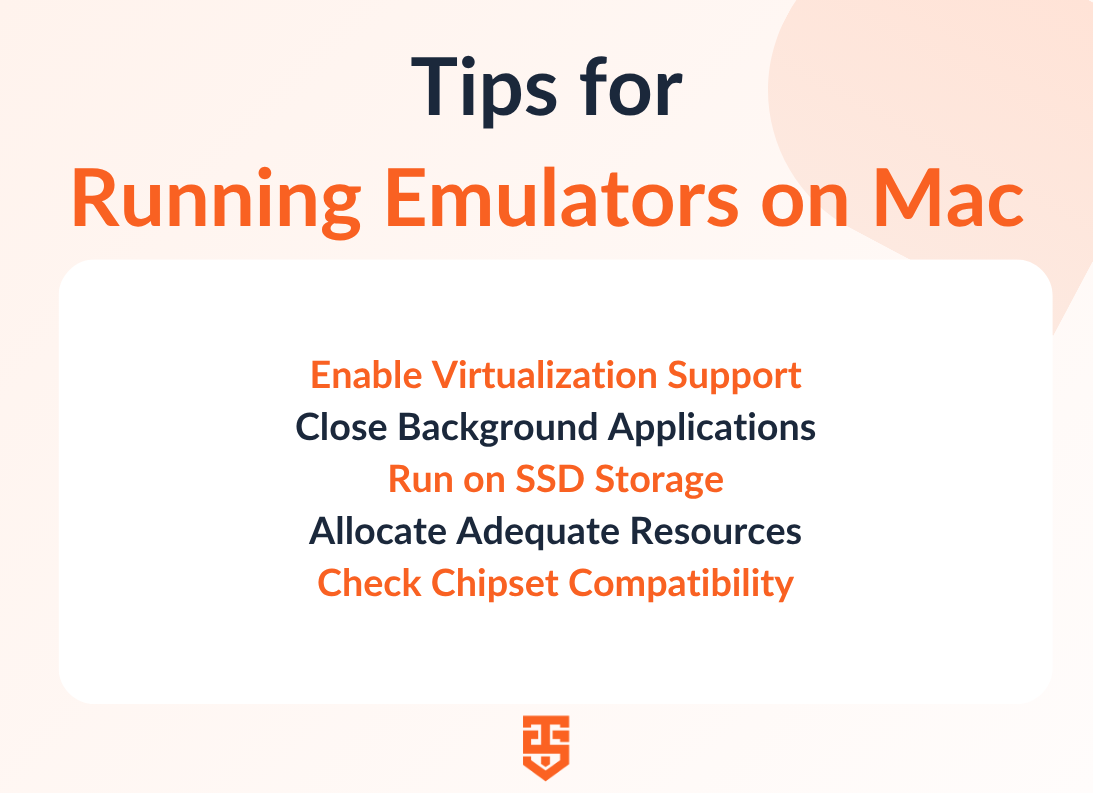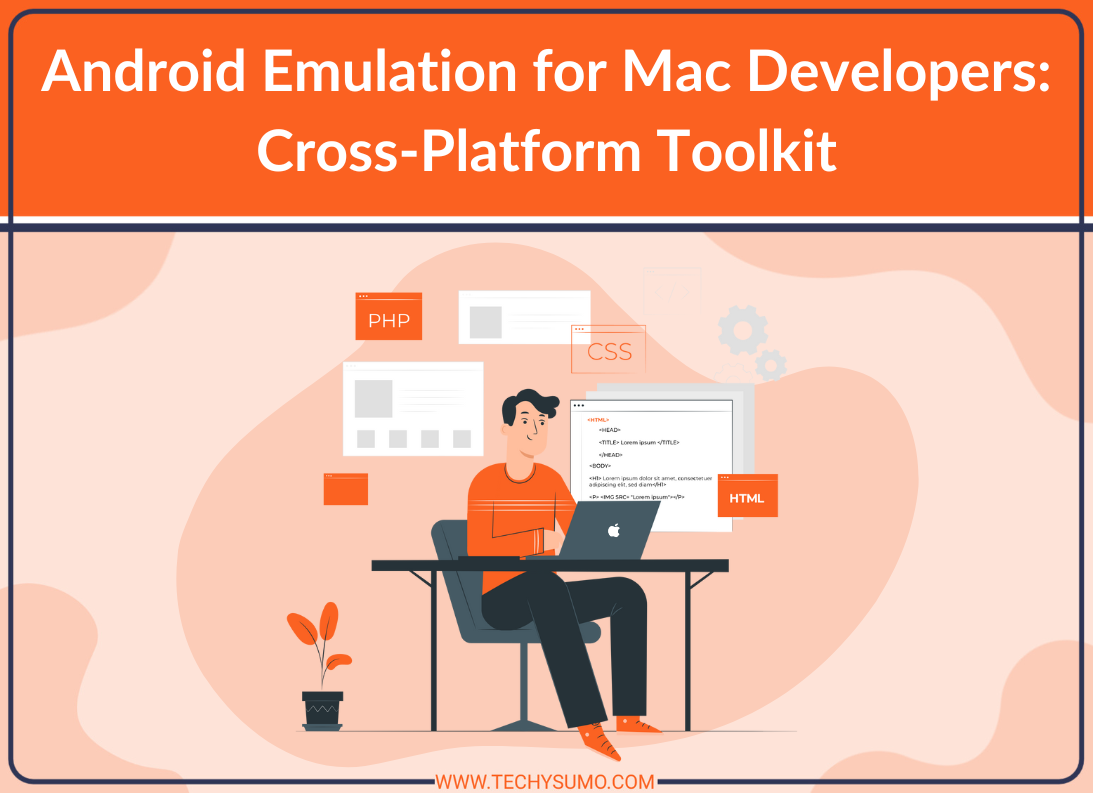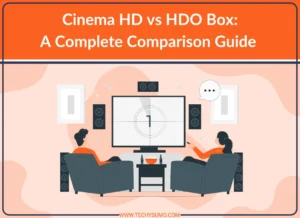Android emulator for Mac solutions help developers build and test Android apps directly on macOS without needing physical devices. Since Android runs on Linux and macOS uses a different system, emulators bridge this gap. In this list, we highlight the top 10 Android emulator Mac options, covering both local and cloud-based tools that support modern development workflows.
Table of Contents
What is an Android Emulator for Mac?
An Android emulator for Mac is a virtual environment replicating the Android system, interface, and hardware features. It permits developers to install, run, and test Android applications directly on a macOS machine without needing a real smartphone or tablet. These emulators simulate certain features of the device, such as touchscreen actions, camera functionalities, GPS, and accelerometer, to ensure that developers can check how an app behaves in real-time usage.
For purposes outside of development, testing teams and product teams also use emulators on Mac for testing across several device configurations. From disparate screen sizes and resolutions to different Android OS versions, emulators help ground the flight for final bug-catching and performance tuning of the application. In short, with or without building an app from scratch, the emulators are a flexible, scalable, and cost-effective solution for Android testing within the macOS ecosystem.
Why Android Emulators on Mac Matter
Most Android development is traditionally done on Windows or Linux. However, Mac developers, especially those building cross-platform apps or managing multi-OS testing pipelines, need reliable Android simulation environments.
Here’s why:
Also Read
- Cross-platform development: Tools like Flutter, React Native, and Xamarin are built to run on macOS, and pairing them with emulators enables full-stack testing on one system.
- No dependency on hardware: Physical Android devices come with cost, fragmentation, and maintenance challenges. Emulators mitigate this.
- Access to device variety: Test across multiple screen sizes, resolutions, and OS versions, without stocking up your shelf.
- Faster iteration cycles: Quickly recompile and test without device reboots or setup.
Best Android Emulators for Mac
With an increasing number of Android emulators available for the Mac, choosing the right one could become a daunting task, more so when each tool has its own set of capabilities and levels of performance. Whether you’re a developer, QA engineer, or on a testing project, choosing the right emulator that suits your workflow is essential to good and efficient Android testing.
Just to make your decision-making process easier, we have prepared a curated list of the best Android emulators for Mac 2025. With a short description and key features of the options, you will be equipped with sufficient insight to pick the right emulator for your developmental or testing needs.
Here are the top Android emulators for Mac to consider this year:
LambdaTest

LambdaTest is a GenAI-Native test execution platform that allows you to perform manual and automated tests at scale across 3000+ browsers and OS combinations and 10,000+ real devices.
Whether you’re testing Android apps or need an Android emulator for iOS compatibility checks, LambdaTest supports both emulators and real device testing, helping teams ensure accurate cross-platform performance without local setup overhead.
Features:
- Run Android app and browser tests on emulators ranging from Android 7 to 14.
- Includes real-time access to top Android devices like Google Pixel 8, Samsung S24, and OnePlus 11.
- Supports Appium and XCUITest for automated test execution.
- Offers geolocation testing across 170+ countries.
- Integrated Chrome DevTools for in-browser debugging.
- Network throttling to simulate real-world connection conditions.
With LambdaTest, developers and QA teams can test across environments with confidence, whether using real Android devices, emulators, or simulating cross-platform conditions like an Android emulator for iOS scenarios.
Android Studio Emulator

Android Studio’s built-in emulator, backed by Google, is the official option for developers building Android apps. It comes integrated with the Android development kit and is widely used for native testing.
Features:
- Access to the latest Android APIs and Google Play Services.
- Create and simulate different device profiles with custom screen sizes and OS versions.
- In-depth debugging through tools like Logcat and network monitors.
- Seamlessly integrated with Android Studio for rapid development and deployment.
- Simulates hardware sensors including GPS, camera, and multi-touch.
Genymotion

Genymotion is a feature-rich Android emulator available both as a desktop app and a cloud-based solution. It’s popular among testers who need precise control over device simulations and compatibility with CI/CD pipelines.
Features:
- Supports over 40 Android device templates, ranging from Android 5.1 to the latest releases.
- Compatible with macOS, including Apple Silicon (M1/M2) devices.
- Simulate battery levels, GPS, SMS, gyroscope, and more.
- Run from Android Studio or the command line using ADB.
- Available via SaaS, making it easy to integrate with cloud workflows.
BlueStacks

Primarily known in the gaming community, BlueStacks also serves developers who want a stable, easy-to-use emulator with strong app compatibility and performance.
Features:
- Supports Android apps and games from Google Play and other sources.
- Smooth performance through virtualization and GPU acceleration.
- Multi-instance support to run multiple apps or games simultaneously.
- Gamepad and keyboard mapping for enhanced interaction.
- Screen recording and screenshot capabilities for content creation and testing.
NoxPlayer

NoxPlayer is another well-regarded emulator that strikes a balance between performance and customization. It’s suitable for developers testing apps that rely on device-level tweaks or rooted access.
Features:
- Offers root access out of the box for testing advanced app behaviors.
- Multi-instance support to test multiple scenarios at once.
- Allows custom keyboard mappings and macro scripting.
- Performance settings let you tweak CPU and RAM allocations.
- Lightweight installation with regular updates for Android OS versions.
MuMu Player

Developed by NetEase, MuMu Player is a high-performance Android emulator tailored for low-latency app execution. It’s especially well-suited for developers focusing on gaming or high-frame-rate apps.
Features:
- Optimized for minimal CPU and RAM consumption.
- Offers full control over screen resolution and system resource allocation.
- Built-in support for game controllers and keyboard mapping.
- Multi-instance manager to test concurrent environments.
- Stable FPS rendering, ideal for performance benchmarking.
ARChon Emulator

Unlike traditional emulators, ARChon runs Android applications directly in the Chrome browser, making it highly portable and ideal for testing lightweight apps or prototypes.
Features:
- Operates as a Chrome extension; no need for full installations.
- Works across all desktop operating systems, including macOS.
- Lightweight footprint, suitable for quick compatibility checks.
- Supports APK conversion using Chrome APK tools.
- Useful for developers testing UI elements and smaller app features.
Bliss OS

Bliss OS is not a standalone emulator but a complete Android-based operating system. When installed through a virtual machine on macOS, it serves as a powerful Android development sandbox.
Features:
- Offers a complete Android desktop experience.
- Customizable launcher and UI for different workflows.
- Runs via VirtualBox or VMware on macOS.
- Active developer community and frequent updates.
- Supports both ARM and x86 app architectures.
KoPlayer

KoPlayer is a lightweight emulator offering good compatibility and screen recording features. It’s a solid choice for developers who want a straightforward Android experience with basic customization.
Features:
- Compatible with thousands of Android apps and games.
- Supports drag-and-drop APK installation.
- Custom keyboard mapping and mouse control options.
- Built-in video recording for demos or bug tracking.
- Allows running multiple instances for multitasking.
Android-x86 on VirtualBox

Android-x86 is a project that ports Android to standard desktop CPUs. When paired with VirtualBox, it enables developers to run Android natively on Mac hardware through virtualization.
Features:
- Offers full Android functionality within a virtual machine.
- Custom configuration options for RAM, CPU, and disk space.
- Works with both Google Play and standalone APKs.
- Supports Bluetooth, Wi-Fi, and sensor emulation.
- Ideal for building and testing custom Android ROMs.
Tips for Running Emulators on Mac Efficiently

While Android emulators offer the ease of testing apps without having physical machines, they are known to be heavy on system resources, especially if you are on Mac. Depending on whether you are on an Intel Mac or the newer Apple Silicon models (M1/M2), the performance and usability of the emulators can still be greatly improved by applying some optimization methods.
Enable Virtualization Support
If virtual machines and emulators based on virtualization need to run (like Android Studio Emulator or Android-x86 with VirtualBox), then virtualization must be enabled. For Intel Macs, the virtualization is usually enabled by default, yet you can make sure of it or configure it using Terminal commands or through some settings of your VM software. For Apple Silicon Macs, ensure that your tools are ARM-architecture optimized and virtualization software (UTM or Parallels) supports the emulator.
Close Background Applications
Emulators are known for consuming significant CPU and RAM. Running them alongside heavy applications like video editors, browsers with multiple tabs, or virtual meetings can lead to lag and crashes. Before launching an emulator, consider quitting unnecessary apps to free up memory and ensure smoother performance.
Run on SSD Storage
Speed matters, especially when you’re loading APKs, switching between device profiles, or emulating different OS versions. Using solid-state drives (SSDs) rather than traditional hard disks dramatically reduces load times and increases read/write speeds. If you’re developing on a MacBook with a built-in SSD, you’re already in a good spot. For external drives, ensure you’re using a fast USB-C or Thunderbolt connection.
Allocate Adequate Resources
Most emulator tools allow you to configure how much memory (RAM) and how many CPU cores they can use. Under-provisioning leads to sluggish emulation, while over-provisioning can strain your Mac’s overall system. A good starting point is allocating 2–4 GB of RAM and at least two CPU cores to the emulator, but adjust based on your app’s complexity and your Mac’s total available resources.
Check Chipset Compatibility
Not all emulators perform equally across different Mac architectures. Some are optimized for Intel-based Macs, while others have added support for Apple Silicon (M1/M2) more recently. For example, emulators like Genymotion now support ARM, while others may still rely heavily on Intel-based environments. Before installing an emulator, review its system requirements and user forums to ensure it’s compatible with your Mac model.
Conclusion
Now that the strict borderlines between platforms have dissolved and app development is done across platforms, the availability of a solid Android emulator on macOS has turned out to be a necessity rather than a mere choice. Whether you are a developer building apps through Flutter or React Native or a QA engineer scrutinizing them on multiple devices, or just someone keeping an eye on Android development from their Mac system, the emulators provide versatility, speed, and scalability without the baggage of physical devices.
From local options like Android Studio’s built-in emulator and Genymotion to high-end cloud solutions like LambdaTest, there are options serving every test need, even an Android emulator for iPhone. It hinges on a strategic choice of the best emulator that fits best with your Mac’s power, the needs of the project, and your workflow.
Smart optimization of your setup, understanding the inter-rivalry of emulators, combined with the knowledge of core features, should enable you to build and test on your Mac just as adequately, if not better, as on any traditional intrepid.






